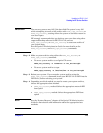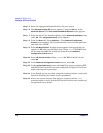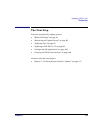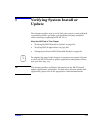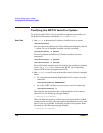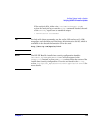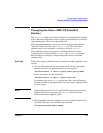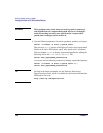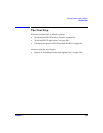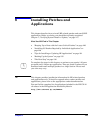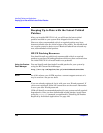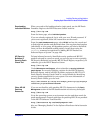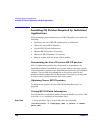
Verifying System Install or Update
Changing the State of HP-UX Installed Patches
Chapter 7 121
Changing the State of HP-UX Installed
Patches
The swinstall utility permits the installation of multiple patch bundles
with a deferred configuration. Some of these patch bundles may contain
superseded patches that do not get configured.
After executing swverify \* on your system, these patches show an
“installed” software state in the swagent.log file. This “installed”
software state is not treated as a warning or error by swverify.
The “installed” patches may present a problem when the current
“applied” patch is removed using swremove. The swremove command
does not detect or configure a superseded patch with an “installed”
software state.
Start Task Follow these steps to check the state of patches currently applied to your
system:
1. List the “SD software state” and “patch state” of both superseded
patches and active (or applied) patches on your system:
/usr/sbin/swlist -a state -a patch_state
patch_number
To list all patches, use the command:
/usr/sbin/swlist -a state -a patch_state PH*
For example, the above swlist options may show some differences
between an older (superseded) patch and the current (applied) patch
on your system.
NOTE Superseded patches left in an “installed” SD state do not cause any
problems, but they require an extra swconfig step when they
become the current “applied” patch.
2. HP recommends that you configure a current “applied” patch in the
“installed” SD state with the following command:
/usr/sbin/swconfig
patch_number



